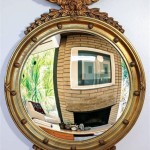How to Mirror Your iPhone to an Apple Computer, TV, or Monitor
Mirroring an iPhone’s screen onto a larger display, such as an Apple computer, TV, or monitor, offers numerous benefits and use cases. This functionality allows users to share content, present information, or simply enjoy a more immersive visual experience. The process involves utilizing either wired connections or wireless protocols, depending on the target device and available hardware. This article provides a comprehensive guide to mirroring an iPhone screen across various Apple and third-party platforms.
AirPlay: Wireless Mirroring to Apple TV and AirPlay-Enabled Devices
AirPlay is Apple's proprietary wireless technology that facilitates streaming audio and video between Apple devices. It's the primary method for mirroring an iPhone to an Apple TV or any device that supports AirPlay 2. This protocol provides a seamless and relatively lag-free experience suitable for most applications, including presentations, video playback, and gaming, although the responsiveness may vary depending on network conditions.
To initiate AirPlay mirroring, ensure that both the iPhone and the receiving device (Apple TV, smart TV, or AirPlay-enabled speaker) are connected to the same Wi-Fi network. This is a fundamental requirement for AirPlay to function correctly, as it relies on local network connectivity. Verify that the Wi-Fi network is stable and has sufficient bandwidth to support the streaming process.
On the iPhone, access the Control Center by swiping down from the top-right corner of the screen (for iPhone X and later) or swiping up from the bottom of the screen (for iPhone 8 and earlier). Locate and tap the "Screen Mirroring" button. A list of available AirPlay devices will appear. Select the target device from the list, such as your Apple TV or smart TV. If prompted, enter the AirPlay passcode displayed on the TV screen. This passcode is a security measure to prevent unauthorized mirroring.
Once connected, the iPhone's display will be mirrored on the selected device. The iPhone's screen resolution will automatically adjust to fit the display, and the audio will also be routed through the selected device's speakers. To stop mirroring, return to the Control Center, tap the "Screen Mirroring" button, and select "Stop Mirroring."
Troubleshooting AirPlay connectivity issues involves several steps. First, ensure that both devices are running the latest software versions. Outdated software can sometimes cause compatibility problems. Restart both the iPhone and the receiving device. A simple restart can often resolve temporary network glitches. Check the Wi-Fi network connection on both devices. Ensure that they are both connected to the same network and that the network is functioning correctly. Temporarily disable Bluetooth on both devices, as Bluetooth interference can sometimes affect Wi-Fi performance. Lastly, ensure that AirPlay is enabled in the settings of the receiving device. For Apple TV, this can be found in the "AirPlay and HomeKit" settings.
Using a Lightning Digital AV Adapter: Wired Mirroring to HDMI-Compatible Displays
For situations where a wireless connection is unreliable or undesirable, a wired connection using a Lightning Digital AV Adapter provides a direct and stable mirroring solution. This adapter connects to the iPhone's Lightning port and provides an HDMI output, allowing you to connect the iPhone to any display with an HDMI port, including TVs, monitors, and projectors. This method bypasses potential Wi-Fi issues and generally offers lower latency, making it suitable for gaming or applications requiring real-time responsiveness.
To use a Lightning Digital AV Adapter, first obtain an official Apple-branded adapter or a reputable third-party adapter certified for compatibility. Lower-quality adapters may not function correctly or could potentially damage the iPhone. Connect the Lightning end of the adapter to the iPhone's charging port. Connect an HDMI cable to the HDMI port on the adapter and the HDMI port on the target display. Select the correct HDMI input on the TV or monitor. The iPhone's display should automatically appear on the connected screen.
The Lightning Digital AV Adapter also includes a Lightning port for charging the iPhone while it is connected to the display. This prevents the battery from draining rapidly during extended mirroring sessions. It is recommended to connect a charging cable to this port to ensure uninterrupted operation.
If the display does not appear on the connected screen, troubleshoot the connection by checking the following. Ensure that the HDMI cable is securely connected to both the adapter and the display. Verify that the correct HDMI input is selected on the TV or monitor. Try using a different HDMI cable, as a faulty cable can sometimes cause connection problems. Restart the iPhone and the display device. If using a third-party adapter, ensure that it is compatible with the iPhone model and iOS version.
The resolution output of the Lightning Digital AV Adapter is typically limited to 1080p at 60Hz. While this is sufficient for most applications, it may not be ideal for displaying high-resolution content such as 4K videos. The picture quality is generally excellent, providing a sharp and clear image. The adapter supports both audio and video output, so the audio will be played through the connected display's speakers.
QuickTime Player: Mirroring to a Mac Computer
Mirroring an iPhone to a Mac computer can be achieved using QuickTime Player. This method utilizes a wired connection via a Lightning to USB cable, providing a reliable and controlled mirroring experience. This approach is particularly useful for recording iPhone screen activity, creating tutorials, or demonstrating mobile applications on a larger display during presentations.
To mirror the iPhone to a Mac using QuickTime Player, connect the iPhone to the Mac using a Lightning to USB cable. Ensure that the iPhone is unlocked and trusts the computer. This is a security measure to prevent unauthorized access to the iPhone's data. Open QuickTime Player on the Mac. Select "File" from the menu bar and choose "New Movie Recording."
In the new movie recording window, a video feed from the Mac's built-in camera will typically be displayed. To switch the video source to the iPhone, click on the arrow next to the record button. A dropdown menu will appear. Select the iPhone from the list of available cameras. The iPhone's display will now be mirrored in the QuickTime Player window.
The mirrored display can be resized and positioned as needed on the Mac's screen. This allows for flexible arrangement of the iPhone's display alongside other applications or windows. QuickTime Player also provides controls for adjusting the audio input source. The default audio input will be the Mac's microphone, but you can select the iPhone as the audio input source to capture audio directly from the iPhone. This is useful for recording screen activity with synchronized audio.
To record the mirrored display, click the record button in QuickTime Player. The recording will capture both the video and audio from the iPhone. When finished, click the record button again to stop the recording. The recording can then be saved to the Mac's hard drive in a QuickTime movie format. The recorded video can be edited using QuickTime Player or any other video editing software.
Troubleshooting this method involves checking the USB connection, ensuring the iPhone trusts the computer, and verifying that the iPhone is selected as the video source in QuickTime Player. If the iPhone is not recognized, try restarting both the iPhone and the Mac. Ensure that the Lightning to USB cable is functioning correctly. A faulty cable can sometimes prevent the iPhone from being recognized. Check the iPhone's settings to ensure that it is set to trust the computer. This setting can be found in the "General" > "Reset" > "Reset Location & Privacy" menu.
These three methods provide comprehensive options for mirroring an iPhone to various devices, catering to different needs and scenarios. Each method offers unique advantages and limitations, allowing users to select the most appropriate approach based on their specific requirements and the available hardware.

How To Mirror Iphone Windows Pc Laptop Mac Full Guide

2024 Updated How To Mirror Iphone Mac With 5 Methods

How To Mirror Iphone Mac 2024

How To Mirror Your Iphone Screen On A Computer Pcmag

Use Airplay To Stream Or Mirror The Screen Of Your Iphone Ipad Apple Support

How To Use Apple Airplay Mirror Your Iphone Mac Screen On Tv Roku And More Cnet

Use Airplay To Stream Or Mirror The Screen Of Your Iphone Ipad Apple Support

How To Use Apple Airplay Mirror Your Iphone Mac Screen On Tv Roku And More Cnet

Use Airplay To Stream Or Mirror The Screen Of Your Iphone Ipad Apple Support

How To Mirror Iphone Mac Without Wi Fi








